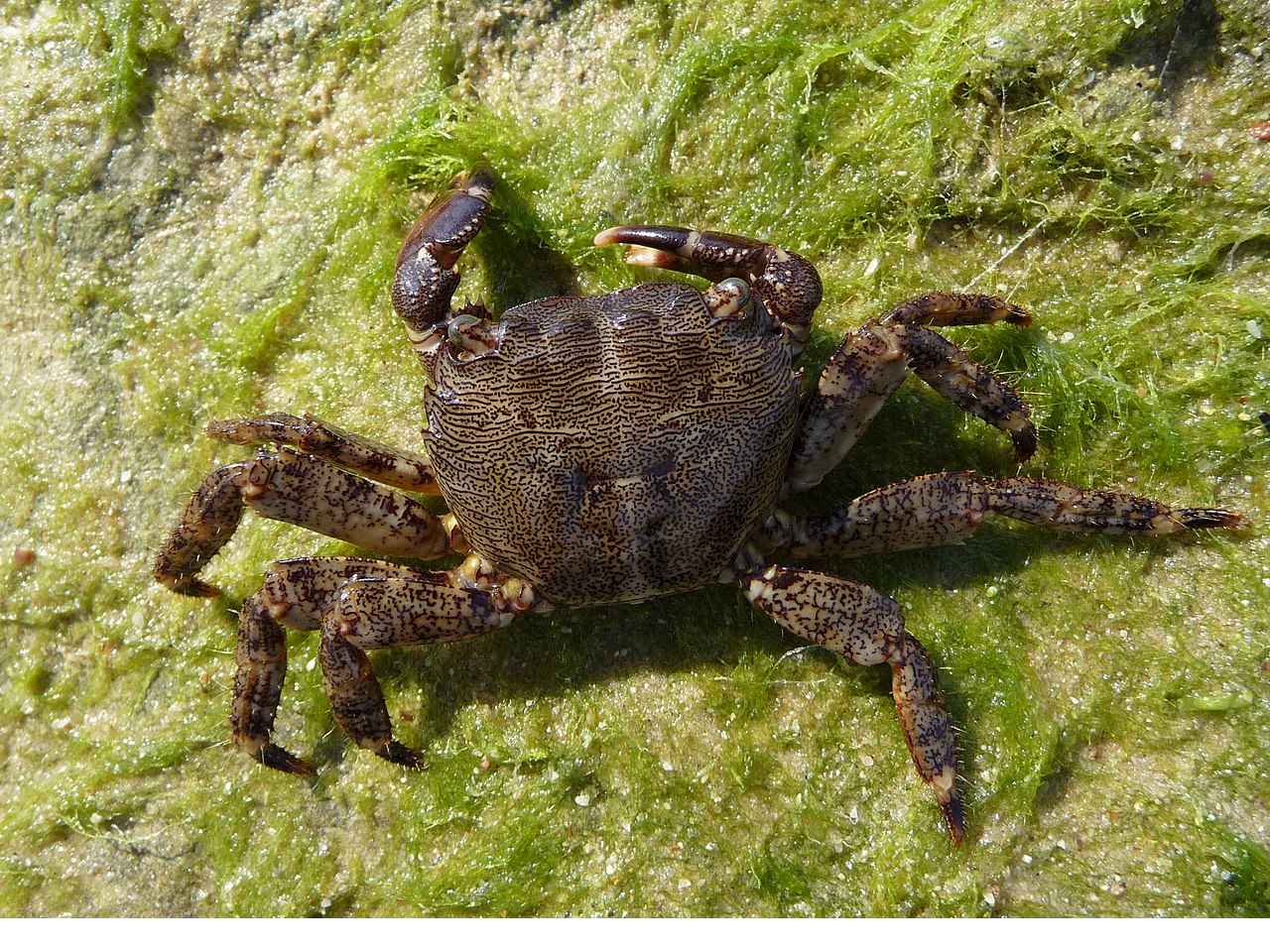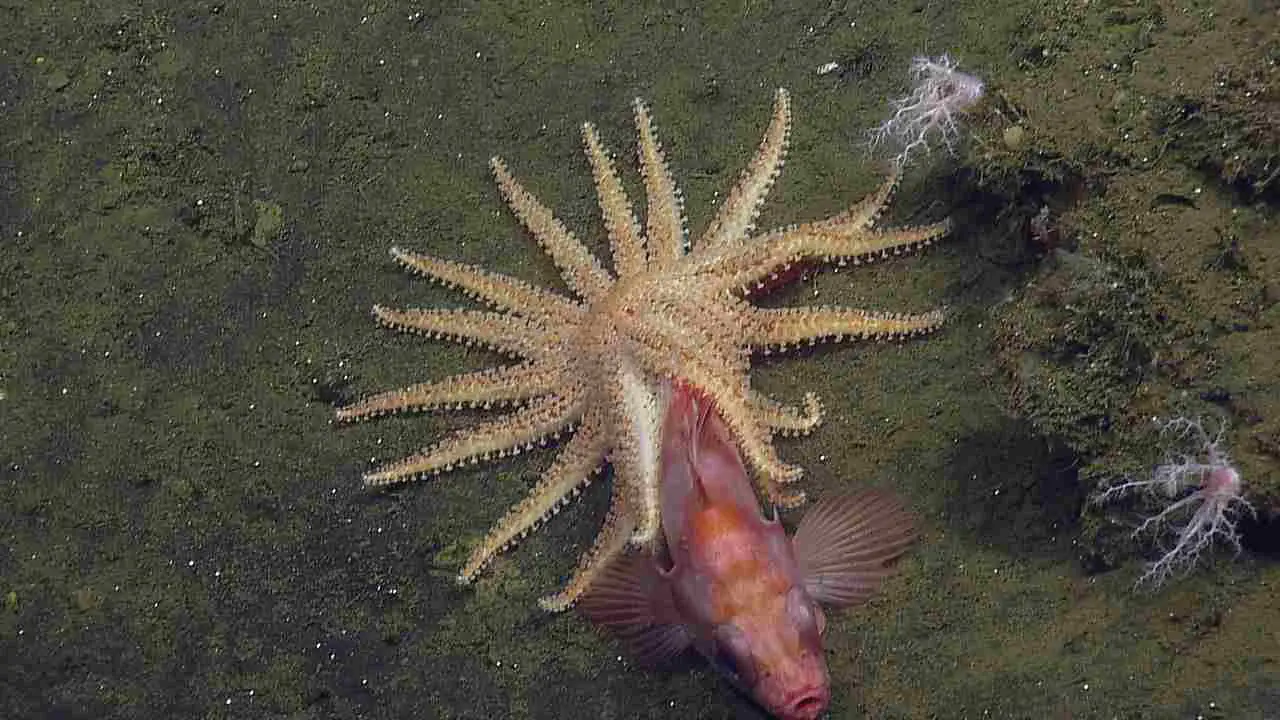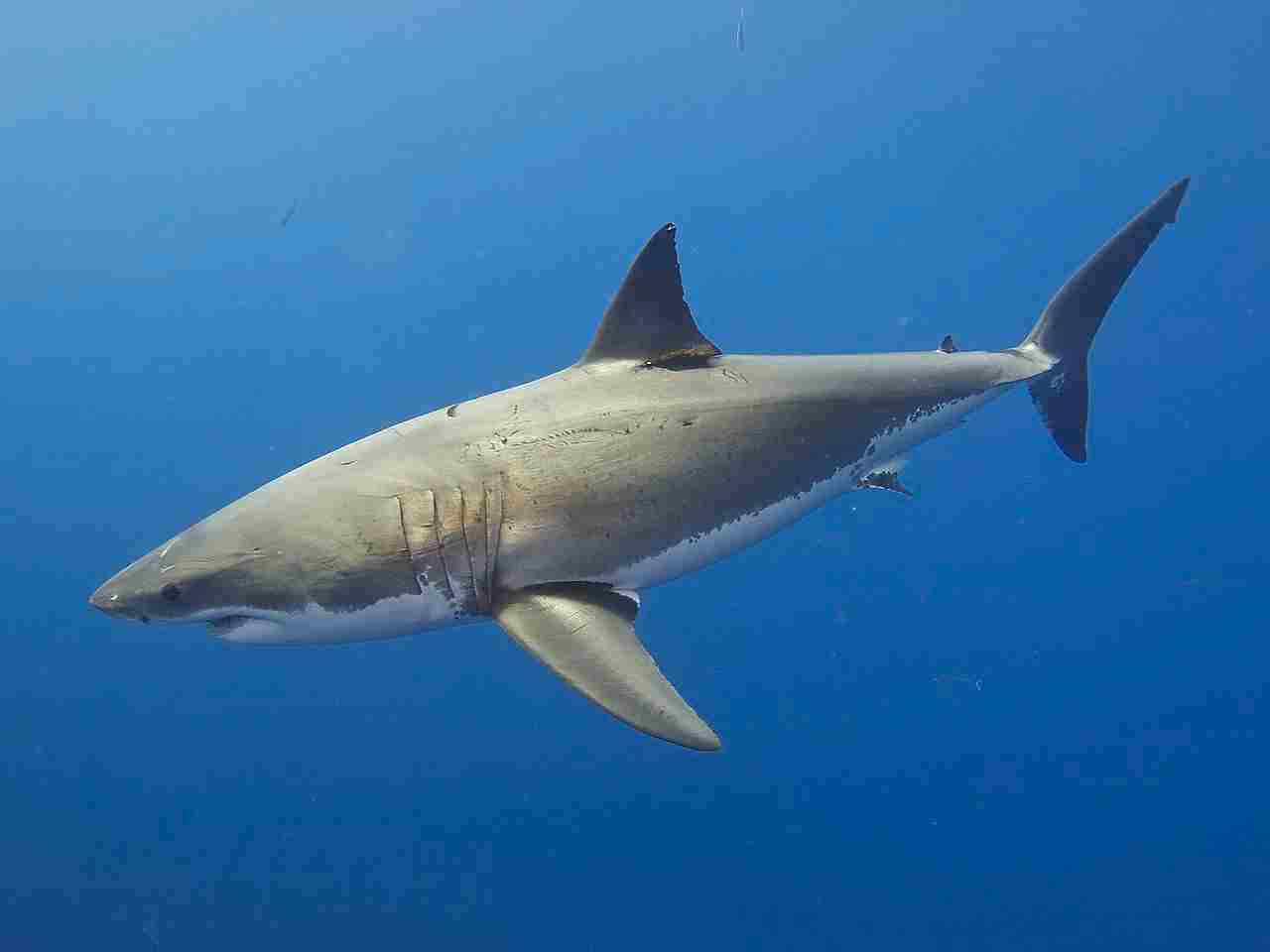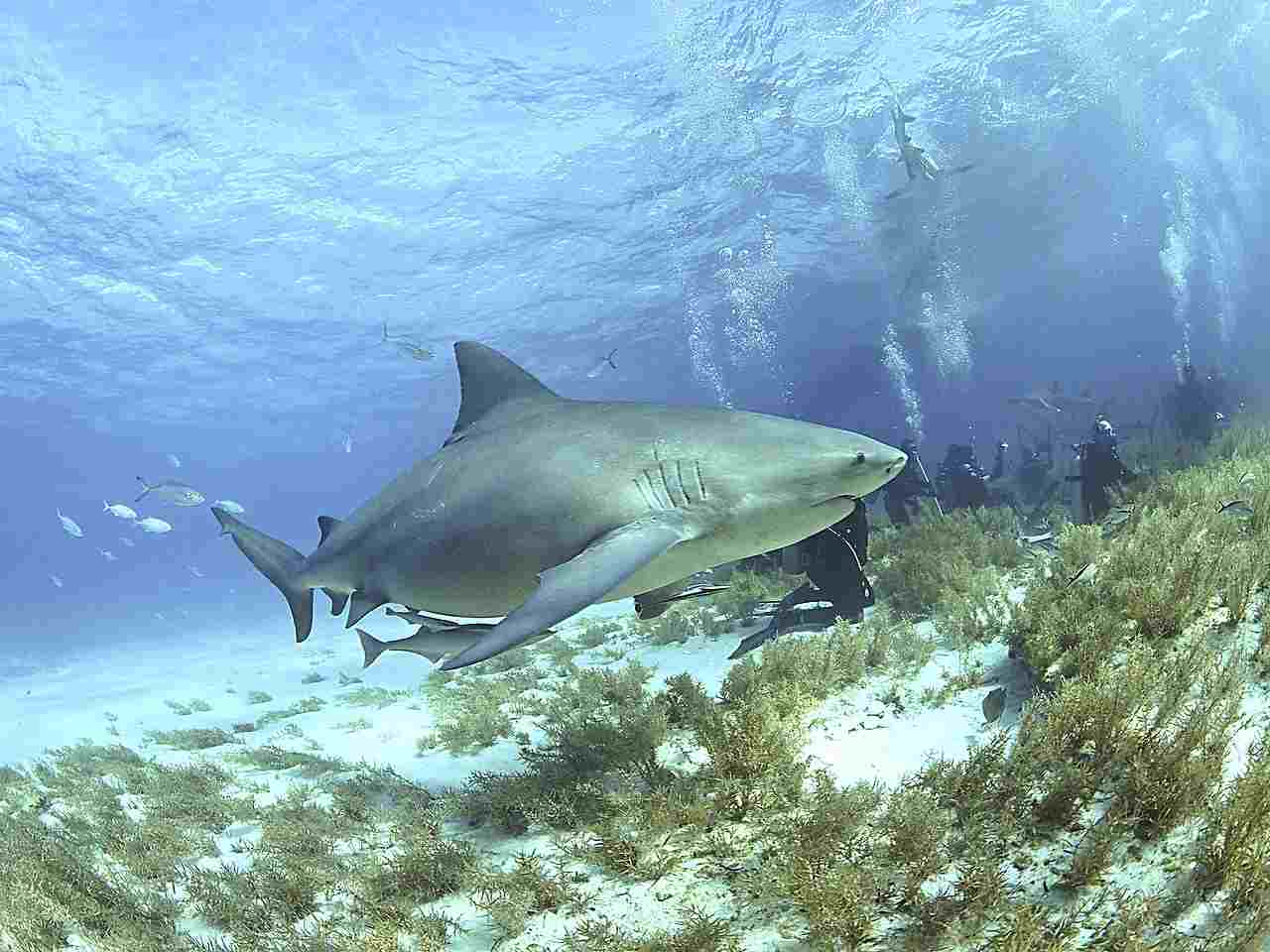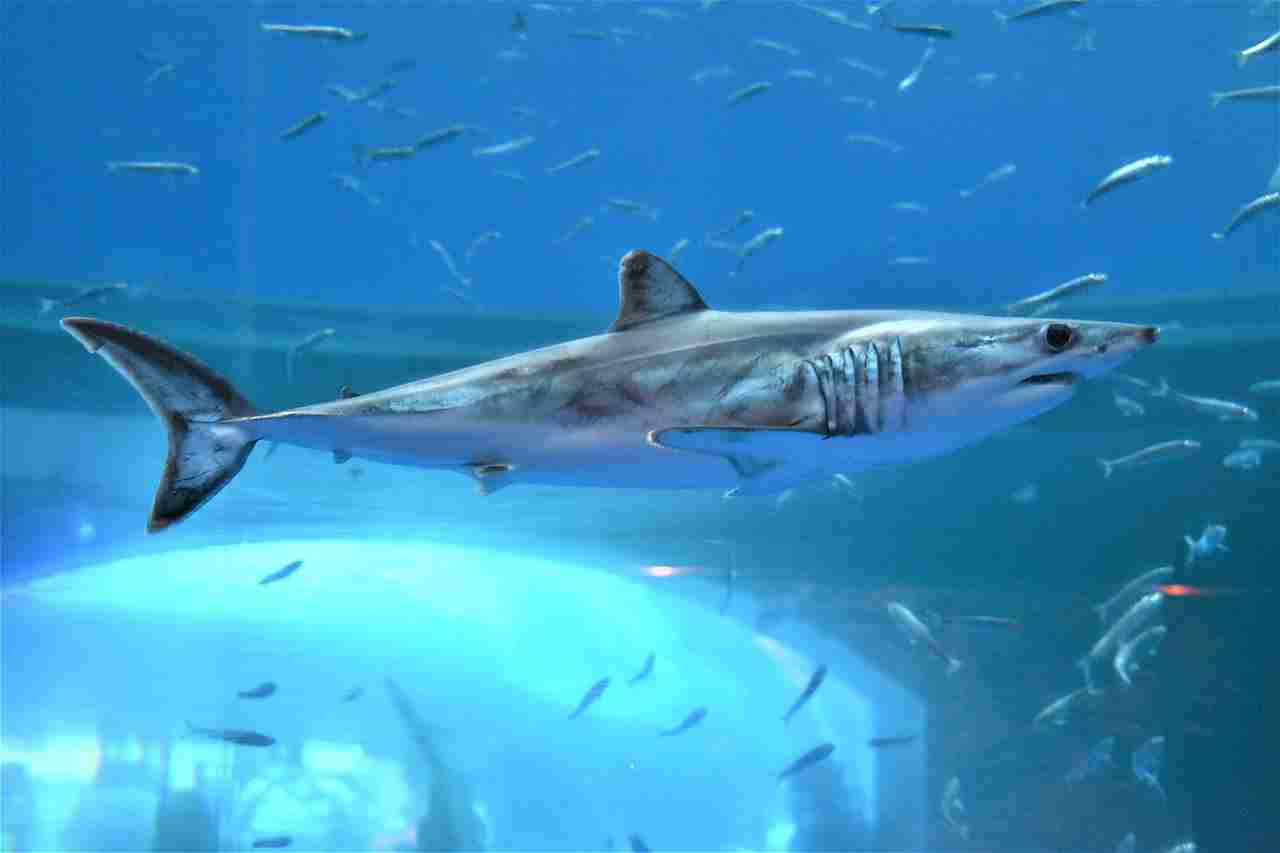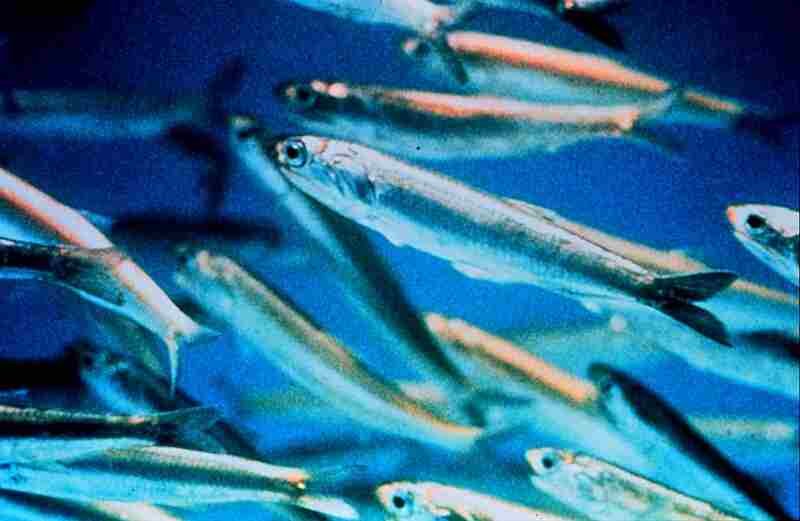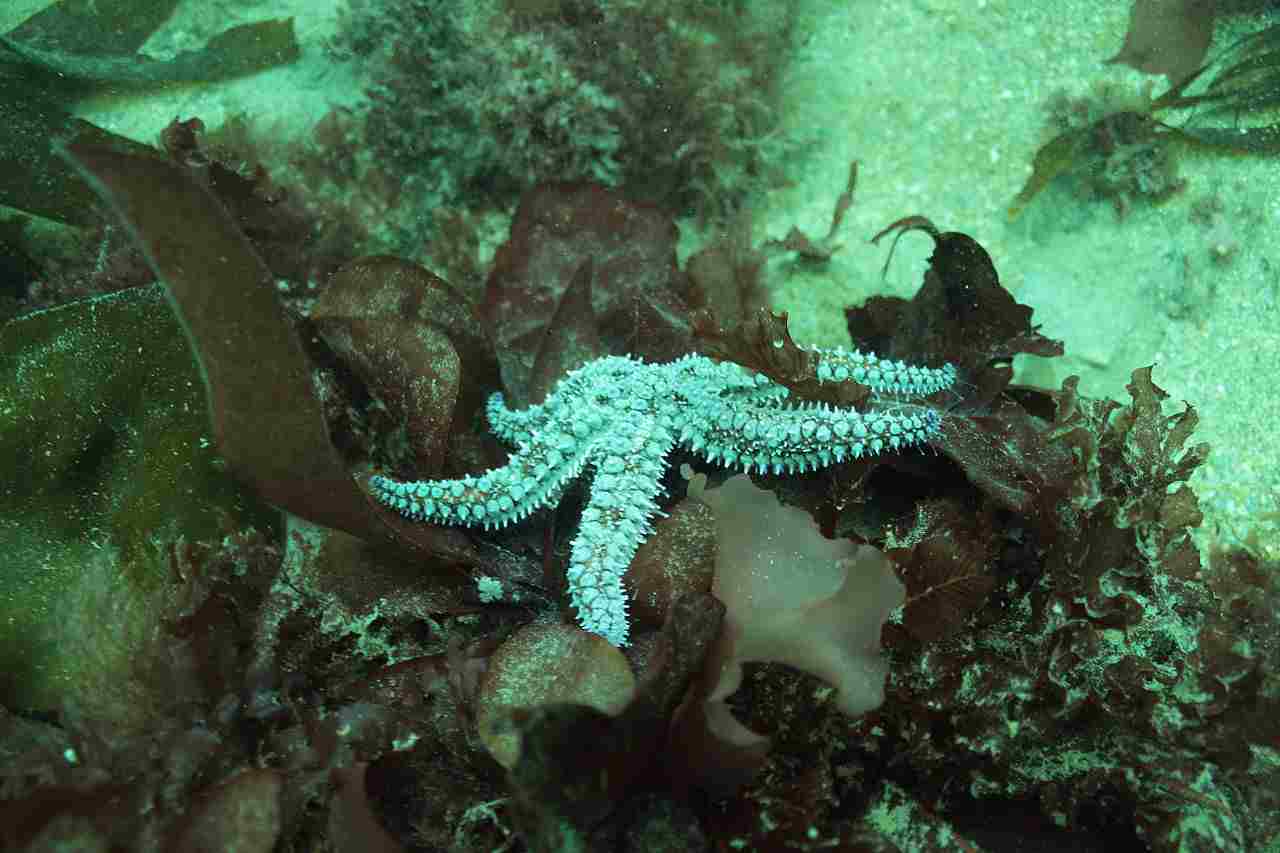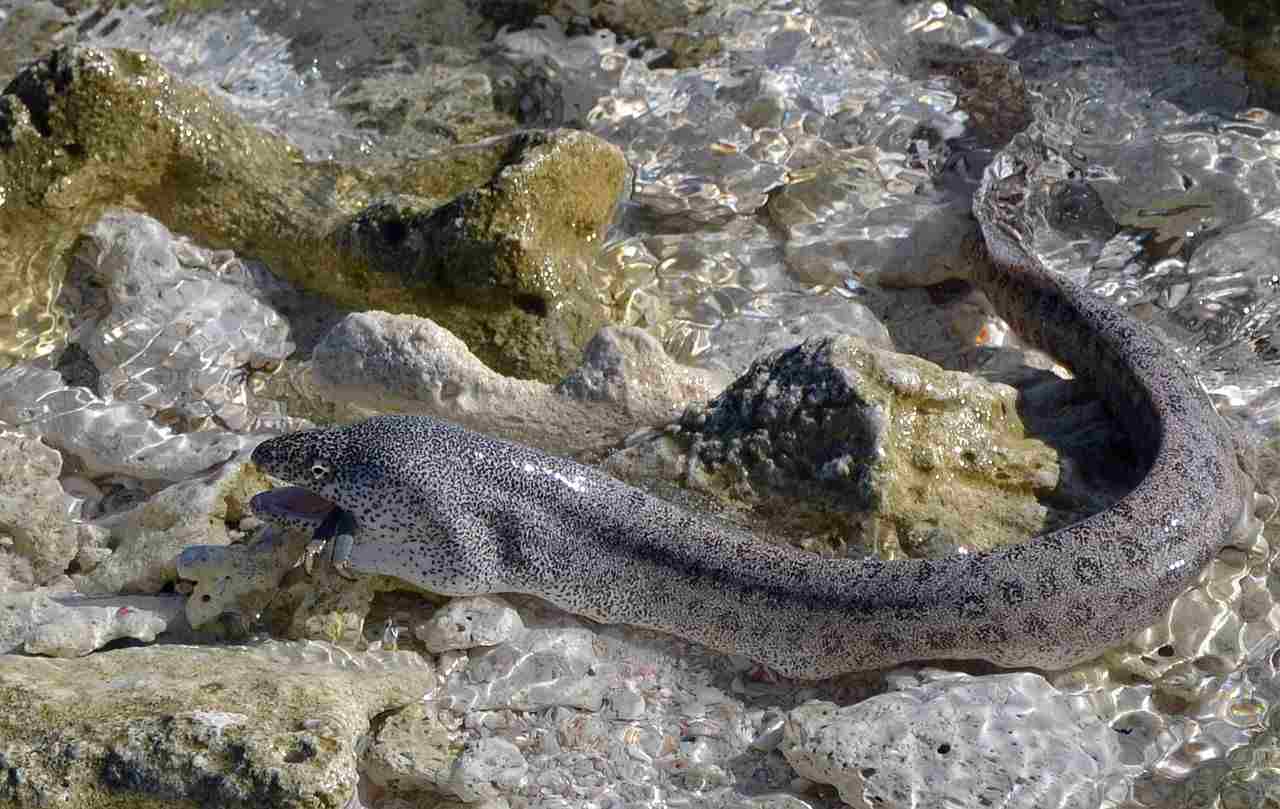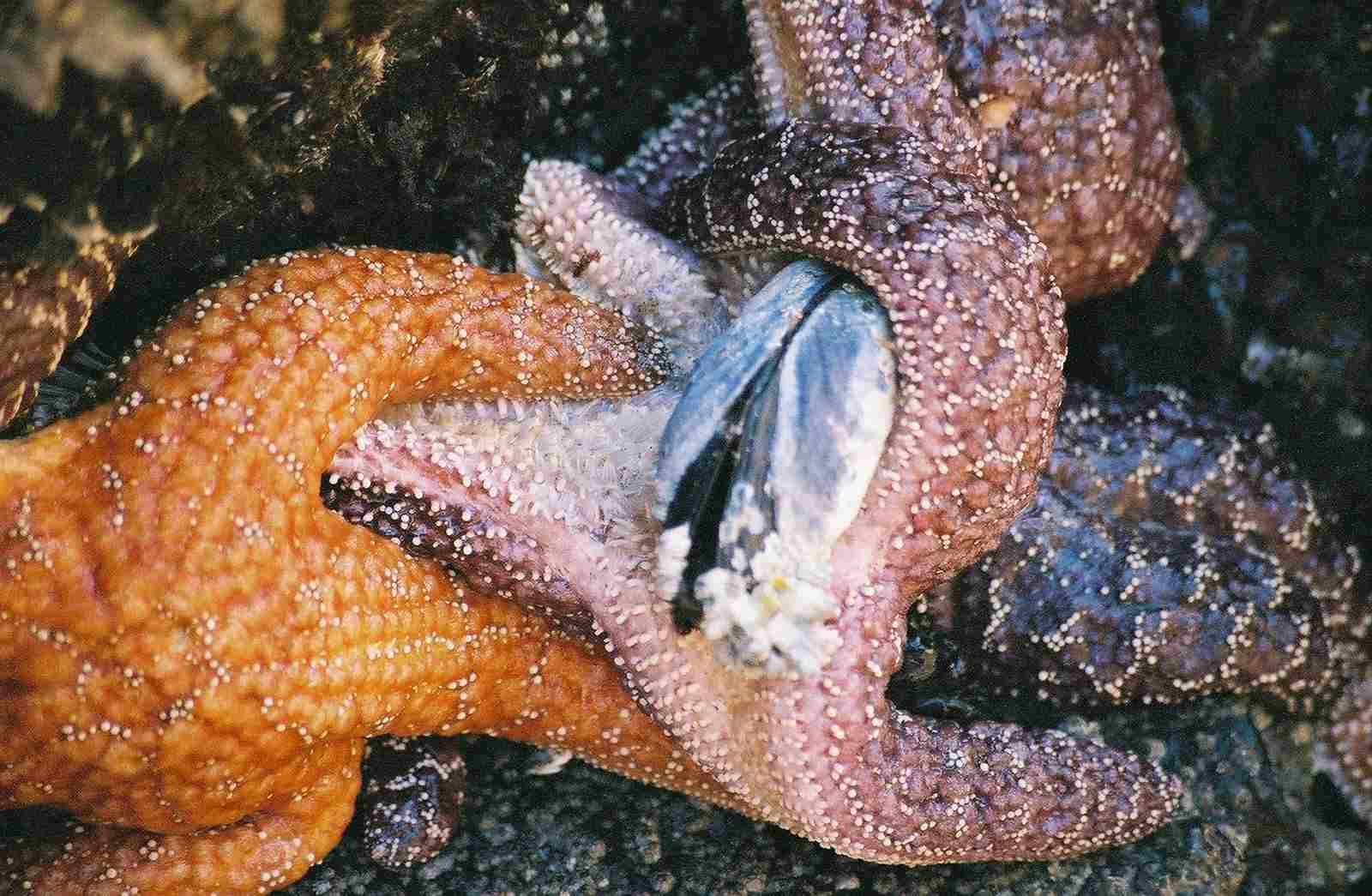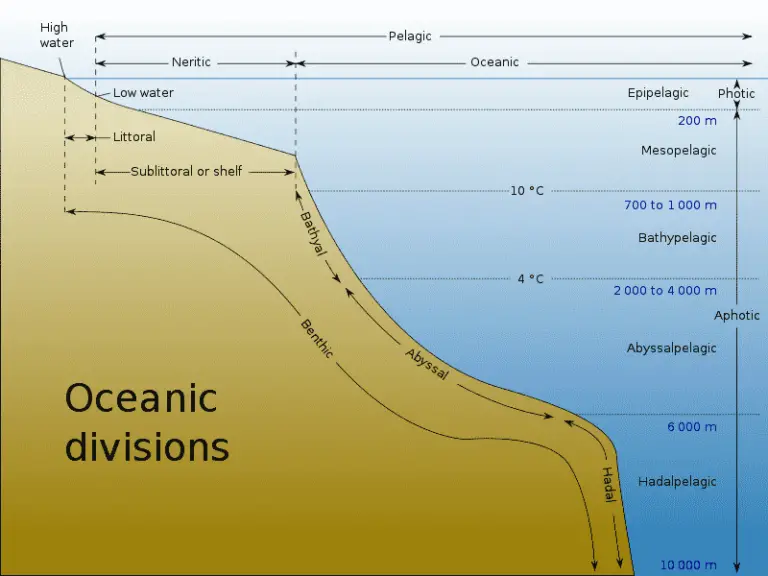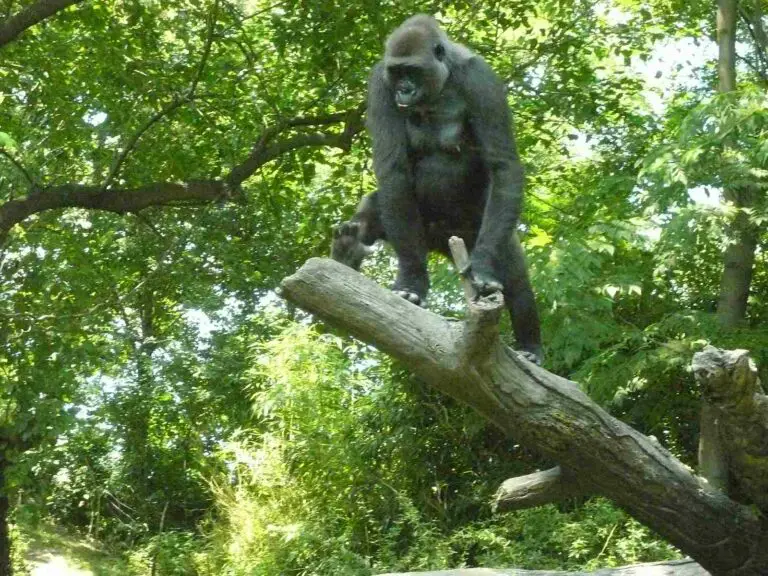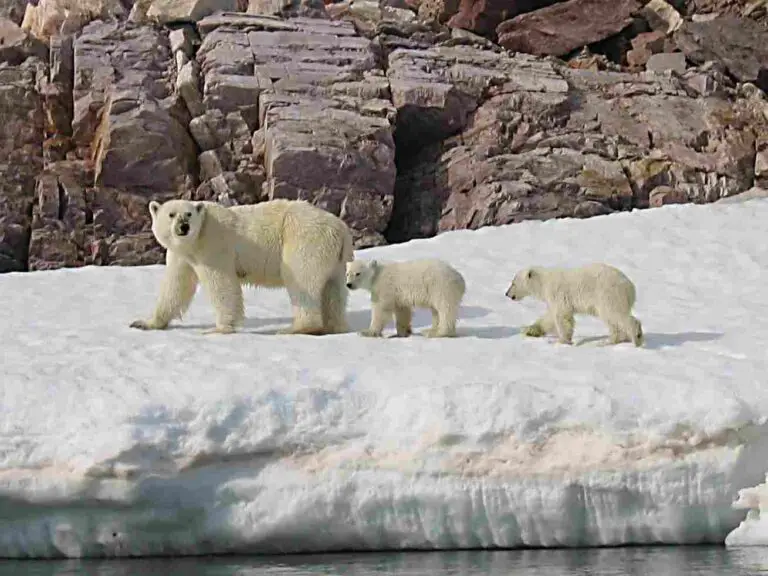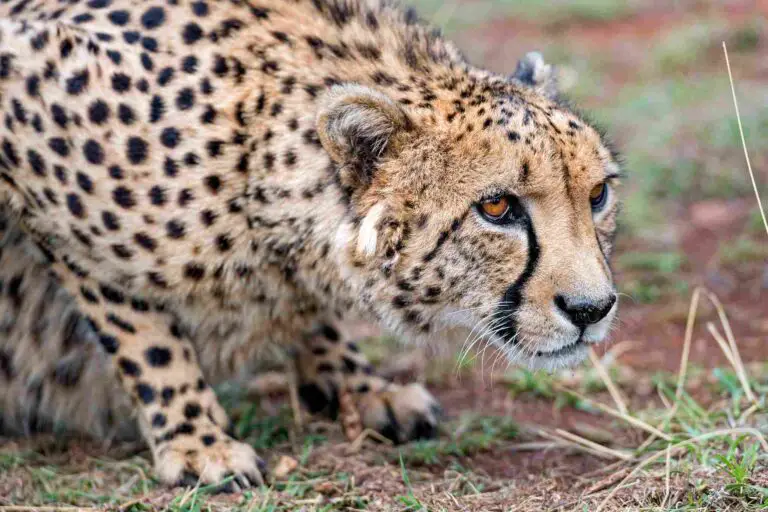9+ Scavengers in The Ocean Ecosystem Discussed
Examples of scavengers in the ocean ecosystem are hermit crabs, sharks like the Great White Shark, sleeper sharks, lobsters, hagfish, shrimp, eelpout, sea stars, amphipods, rat-tails, and isopods. These diverse organisms play vital roles in nutrient cycling, waste removal, and ecosystem balance by consuming carrion, detritus, and decaying matter. Through their scavenging activities, they help maintain the cleanliness of marine habitats, support the growth of other marine organisms, and contribute to the overall health and stability of marine ecosystems.
1. Hermit Crab
Among the ocean’s diverse scavengers, the hermit crab stands out as a fascinating creature. With its distinctive habit of residing within discarded mollusk shells, the hermit crab navigates the ocean floor in search of food and shelter. These crustaceans play a crucial role in the ecosystem, as they scavenge on organic matter and carrion, contributing to nutrient recycling and the overall health of marine environments.
Hermit crabs possess a unique adaptation: their soft, vulnerable abdomens necessitate the use of salvaged shells for protection. As they grow, hermit crabs must continuously seek larger shells to accommodate their expanding bodies. This constant quest for suitable housing often leads them to compete fiercely with one another, engaging in shell “battles” to claim the most desirable shelters.
Despite their small size, hermit crabs play a significant role in maintaining ecological balance. By consuming decaying matter and dead organisms, they help prevent the buildup of detritus and contribute to the decomposition process, which is essential for nutrient cycling in marine ecosystems. Additionally, their scavenging behavior supports other marine life by recycling nutrients and providing a food source for predators higher up the food chain.
In essence, hermit crabs exemplify the vital role that scavengers play in the oceanic ecosystem. Their scavenging activities contribute to the health and balance of marine environments, highlighting the interconnectedness of all organisms in the intricate web of ocean life.
2. Great White Shark
The Great White Shark, often revered as the apex predator of the ocean, also plays a crucial role as a scavenger in marine ecosystems. While commonly known for their formidable hunting prowess, these majestic creatures are opportunistic feeders, readily consuming carrion and scavenging on deceased marine animals. Despite their ferocious reputation, Great White Sharks display a surprisingly versatile diet, scavenging on dead whales, seals, and other large marine mammals that they encounter during their oceanic voyages.
As scavengers, Great White Sharks serve as nature’s clean-up crew, helping to dispose of carcasses and organic matter that would otherwise accumulate on the ocean floor. Their scavenging activities contribute to nutrient cycling and ecosystem health by breaking down organic material and returning essential nutrients to the marine environment. Additionally, their presence can attract other scavengers and opportunistic feeders, further aiding in the efficient decomposition of organic matter.
3. Sleeper Shark
Sleeper Sharks, known for their sluggish demeanor and nocturnal habits, play a vital role as scavengers in the deep ocean. These enigmatic creatures are well adapted to the cold, dark depths where they primarily reside, scavenging on a variety of organic matter and carrion that drifts down from the surface. Despite their relatively inactive lifestyle, sleeper sharks possess powerful jaws and sharp teeth, allowing them to efficiently consume carcasses and other scavenged prey.
As scavengers of the deep, sleeper sharks contribute to the ecosystem by recycling nutrients and maintaining the balance of marine food webs. Their consumption of carrion helps prevent the buildup of detritus on the ocean floor and supports the growth of other organisms that rely on nutrient-rich environments. Additionally, sleeper sharks play a role in regulating populations of marine species by consuming dead or weakened individuals, thereby influencing the dynamics of oceanic ecosystems.
4. Lobster
Lobsters, with their distinctive appearance and scavenging behavior, are important contributors to marine ecosystems. These crustaceans are opportunistic feeders, scavenging on a variety of organic matter and carrion that they encounter on the ocean floor. Despite their reputation as bottom-dwellers, lobsters are skilled hunters and scavengers, using their powerful claws to crush shells and extract meat from carcasses.
As scavengers, lobsters play a vital role in nutrient cycling and ecosystem health by consuming decaying matter and recycling nutrients back into the marine environment. Their scavenging activities help maintain the cleanliness of the ocean floor by removing dead organisms and preventing the buildup of detritus. Additionally, lobsters serve as an important food source for predators higher up the marine food chain, contributing to the overall balance and biodiversity of marine ecosystems.
5. Atlantic Hagfish
The Atlantic Hagfish, often referred to as a “living fossil,” is a primitive scavenger that inhabits the dark depths of the ocean floor. These jawless fish possess a unique adaptation: the ability to produce copious amounts of slime as a defense mechanism. Despite their unassuming appearance, Atlantic Hagfish play a vital role as scavengers in marine ecosystems, feeding on carrion and decaying organic matter that falls to the ocean floor.
As scavengers, Atlantic Hagfish contribute to nutrient cycling and ecosystem health by consuming dead organisms and recycling nutrients back into the marine environment. Their feeding habits help prevent the accumulation of detritus on the ocean floor, maintaining a clean and healthy habitat for other marine organisms. Additionally, Atlantic Hagfish serve as an important food source for predators higher up the marine food chain, further contributing to the balance and biodiversity of marine ecosystems.
6. Shrimp
Shrimp are ubiquitous scavengers found in various marine environments, ranging from coastal estuaries to the deep sea. These small crustaceans play a significant role in marine ecosystems as opportunistic feeders, scavenging on detritus, carrion, and decaying organic matter. With their agile and versatile feeding habits, shrimp help maintain the cleanliness of marine habitats by consuming dead organisms and recycling nutrients back into the ecosystem.
As scavengers, shrimp play a crucial role in nutrient cycling and ecosystem health by breaking down organic matter and returning essential nutrients to the marine environment. Their scavenging activities contribute to the overall productivity and biodiversity of marine ecosystems by supporting the growth of other organisms that rely on nutrient-rich environments. Additionally, shrimp serve as an important food source for a variety of marine predators, further emphasizing their significance in marine food webs.
7. Eelpout
Eelpouts, also known as “eel-like fish,” are scavengers commonly found in cold, deep-sea environments. These elongated fish possess a voracious appetite and feed on a variety of organic matter, carrion, and detritus that drifts down to the ocean floor. Despite their unassuming appearance, eelpouts play a crucial role in nutrient cycling and ecosystem health by consuming decaying matter and recycling nutrients back into the marine environment.
As scavengers of the deep sea, eelpouts help maintain the cleanliness of the ocean floor by consuming dead organisms and preventing the buildup of detritus. Their scavenging activities contribute to the overall productivity and biodiversity of marine ecosystems by supporting the growth of other organisms that rely on nutrient-rich environments. Additionally, eelpouts serve as an important food source for larger predators, further highlighting their significance in marine food webs.
8. Sea Star
Sea stars, also known as starfish, are fascinating scavengers found in a variety of marine habitats worldwide. These echinoderms are renowned for their unique anatomy, with multiple arms radiating from a central disk. Sea stars play a crucial role in marine ecosystems as opportunistic feeders, scavenging on a wide range of organic matter and carrion that they encounter on the ocean floor.
As scavengers, sea stars contribute to nutrient cycling and ecosystem health by consuming dead organisms and recycling nutrients back into the marine environment. Their feeding habits help prevent the accumulation of detritus on the ocean floor, maintaining a clean and healthy habitat for other marine organisms. Additionally, sea stars serve as important predators of bivalves and other invertebrates, contributing to the regulation of prey populations and the overall balance of marine ecosystems.
9. Amphipods
Amphipods are small, shrimp-like crustaceans that inhabit marine environments worldwide. These agile scavengers play a vital role in marine ecosystems as opportunistic feeders, consuming detritus, carrion, and decaying organic matter. Amphipods are incredibly diverse, with species found in a wide range of marine habitats, from shallow coastal waters to the deep sea.
As scavengers, amphipods contribute to nutrient cycling and ecosystem health by breaking down organic matter and returning essential nutrients to the marine environment. Their feeding activities help maintain the cleanliness of marine habitats by consuming dead organisms and preventing the buildup of detritus. Additionally, amphipods serve as an important food source for a variety of marine predators, including fish, birds, and larger invertebrates, further emphasizing their significance in marine food webs.
10. Rat-Tail
Rat-tails, also known as grenadiers, are deep-sea scavengers that play a crucial role in marine ecosystems. These elongated fish are commonly found in the dark depths of the ocean, where they scavenge on carrion, detritus, and other organic matter that sinks from the surface. Despite their unassuming appearance, rat-tails are highly adapted to life in the deep sea, with elongated bodies and large mouths designed for efficient scavenging.
As scavengers of the deep, rat-tails contribute to nutrient cycling and ecosystem health by consuming decaying matter and recycling nutrients back into the marine environment. Their feeding activities help maintain the cleanliness of the ocean floor by removing dead organisms and preventing the buildup of detritus. Additionally, rat-tails serve as an important food source for larger predators, including sharks and other deep-sea fish, further emphasizing their significance in marine food webs.
11. Isopods
Isopods, commonly known as sea roaches or sea lice, are small crustaceans found in marine environments worldwide. These scavengers play a vital role in marine ecosystems by feeding on detritus, carrion, and decaying organic matter. Isopods are incredibly diverse, with species occupying a wide range of habitats, from shallow coastal waters to the deep sea.
As scavengers, isopods contribute to nutrient cycling and ecosystem health by breaking down organic matter and returning essential nutrients to the marine environment. Their feeding activities help maintain the cleanliness of marine habitats by consuming dead organisms and preventing the buildup of detritus. Additionally, isopods serve as an important food source for a variety of marine predators, including fish, birds, and larger invertebrates, further highlighting their significance in marine food webs.
*Summary
-
Hermit Crab:
-
Resides in discarded mollusk shells.
-
Scavenges on organic matter and carrion.
-
Contributes to nutrient recycling in marine environments.
-
-
Great White Shark:
-
Apex predator also scavenges on carrion.
-
Consumes dead whales, seals, and marine mammals.
-
Plays a role in nutrient cycling and ecosystem balance.
-
-
Sleeper Shark:
-
Inhabits cold, deep-sea environments.
-
Scavenges on organic matter and carrion.
-
Contributes to nutrient cycling and ecosystem health.
-
-
Lobster:
-
Opportunistic feeder and scavenger.
-
Consumes detritus and decaying organic matter.
-
Supports marine food webs and ecosystem balance.
-
-
Atlantic Hagfish:
-
Primitive scavenger producing copious slime.
-
Feeds on carrion and decaying matter.
-
Contributes to nutrient recycling and ecosystem health.
-
-
Shrimp:
-
Ubiquitous scavenger found in various marine habitats.
-
Consumes detritus, carrion, and decaying matter.
-
Supports nutrient cycling and marine biodiversity.
-
-
Eelpout:
-
Cold, deep-sea scavenger.
-
Consumes dead organisms and detritus.
-
Maintains cleanliness of ocean floor and supports ecosystem balance.
-
-
Sea Star:
-
Found in various marine habitats.
-
Feeds on detritus and dead organisms.
-
Contributes to nutrient cycling and ecosystem health.
-
-
Amphipods:
-
Small crustaceans found worldwide.
-
Consume detritus and decaying matter.
-
Support marine food webs and nutrient recycling.
-
-
Rat-Tail:
-
Deep-sea scavenger adapted to life in the abyss.
-
Feeds on carrion and organic matter.
-
Contributes to nutrient cycling and ecosystem health.
-
-
Isopods:
-
Small crustaceans found in marine environments.
-
Feed on detritus and decaying matter.
-
Support marine food webs and ecosystem balance.
-
| Scavenger | Key Points |
| Hermit Crab |
Resides in discarded shells, scavenges on organic matter and carrion
|
| Great White Shark |
Apex predator scavenging on carrion like dead whales and marine mammals
|
| Sleeper Shark |
Inhabits deep-sea, scavenges on organic matter and contributes to nutrient cycling
|
| Lobster |
Opportunistic feeder scavenging detritus, decaying matter supporting marine life
|
| Atlantic Hagfish |
Produces slime, scavenges on carrion and decaying matter
|
| Shrimp |
Ubiquitous scavenger consuming detritus, carrion, and decaying matter
|
| Eelpout |
Cold, deep-sea scavenger maintaining cleanliness of the ocean floor
|
| Sea Star |
Feeds on detritus and dead organisms contributing to nutrient cycling
|
| Amphipods |
Small crustaceans worldwide consuming detritus and decaying matter
|
| Rat-Tail |
Deep-sea scavenger feeding on carrion and contributing to nutrient cycling
|
| Isopods |
Small crustaceans in marine environments feeding on detritus and decaying matter
|
Related FAQs
-
Why are scavengers important in the ocean?
-
Scavengers play a vital role in marine ecosystems by helping to recycle nutrients, break down organic matter, and maintain the cleanliness of habitats. They contribute to nutrient cycling and ecosystem health by consuming carrion and decaying matter, preventing the buildup of detritus, and supporting the growth of other marine organisms.
-
-
What do scavengers eat in the ocean?
-
Scavengers in the ocean feed on a variety of organic matter, carrion, detritus, and decaying material. Their diet may include dead organisms, waste products, and other debris that sink to the ocean floor or drift in the water column. Examples of scavenger diets include dead fish, marine mammals, plants, and other organic material.
-
-
How do scavengers contribute to nutrient cycling in marine ecosystems?
-
Scavengers play a crucial role in nutrient cycling by consuming decaying matter and recycling nutrients back into the marine environment. Through their feeding activities, scavengers help break down organic material, releasing essential nutrients that can be utilized by other marine organisms. This process helps maintain the productivity and balance of marine ecosystems.
-
-
What are some examples of scavengers in the ocean?
-
Examples of scavengers in the ocean include hermit crabs, sharks (such as the Great White Shark), sleeper sharks, lobsters, hagfish, shrimp, eelpout, sea stars, amphipods, rat-tails, and isopods. These organisms exhibit a range of scavenging behaviors and play important roles in marine food webs and ecosystem dynamics.
-
-
How do scavengers contribute to ecosystem balance in the ocean?
-
Scavengers contribute to ecosystem balance in the ocean by regulating the availability of nutrients, removing dead organisms and waste material, and supporting the growth of other marine species. By consuming carrion and decaying matter, scavengers help prevent the accumulation of detritus and maintain the health and cleanliness of marine habitats, ultimately promoting the overall stability and biodiversity of marine ecosystems.
-

